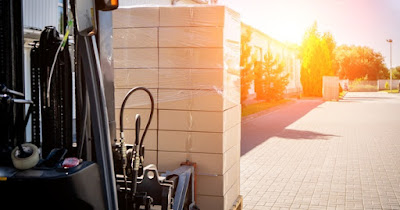UV radiation poses significant risks to a variety of materials used across industries. For businesses reliant on durable packaging, construction materials, and other outdoor products, understanding these effects is important to safeguard investments. Below, we’ll explore how UV radiation damages product materials and what this could mean for your business.
Fading and Discoloration
UV radiation interacts with pigments and dyes in materials, causing them to degrade over time. This process results in noticeable fading and discoloration. For example, outdoor signage, painted surfaces, and textiles lose their vibrancy after extended UV exposure.
Faded colors diminish the aesthetic appeal of products and impact brand perception when materials associated with a company’s image start to look worn or outdated. Businesses can mitigate these effects by choosing UV-resistant coatings or treatments for materials exposed to sunlight.
Embrittlement and Cracking
Materials left unprotected against UV radiation can experience a breakdown of their physical structure. Prolonged exposure can lead to molecules within the material weakening, which eventually causes embrittlement and cracking. Plastics left outdoors often fracture because UV rays weaken their bonds.
This leads to compromised product integrity, decreasing the lifespan of critical components in construction materials, outdoor furniture, or packaging. Business owners relying on durable materials must use protective strategies, such as stretch wrappers to shield outdoor building supplies effectively from UV-induced damage.
Polymer Degradation
Polymers, used extensively across industries for their versatility, are particularly vulnerable to UV radiation. When exposed to sunlight, the chemical structure of polymers can degrade. This degradation manifests as a loss of mechanical strength, making materials brittle and prone to failure.
Polyethylene films, commonly used in packaging, lose their effectiveness if left exposed for too long. UV inhibitors or stabilizers can be incorporated during the manufacturing process to prolong the life of polymer-based materials and mitigate these risks.
Surface Damage
Surface imperfections, such as chalking, are another common consequence of UV exposure. Chalking occurs when UV radiation breaks down the binders in paints, coatings, or plastics, leading to a powdery residue on the surface.
Besides affecting appearance, surface damage like chalking also opens the door for further deterioration, as the compromised exterior is often less resistant to environmental factors like moisture or heat. Business owners should consider protective coatings or coverings designed for UV resistance to minimize such surface-level degradation.
UV radiation’s impact on product materials goes beyond cosmetic changes, directly affecting the durability and functionality of your items. While issues like fading, cracking, and polymer degradation pose clear threats, proactive measures can make a significant difference in product viability.
Investing in UV-resistant finishes, using protective tools like stretch wrappers for outdoor building materials, and adopting best practices for material selection are all effective strategies to safeguard your assets.

